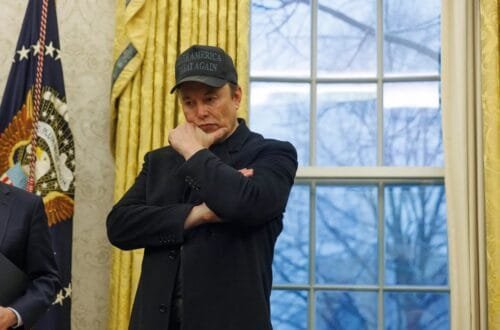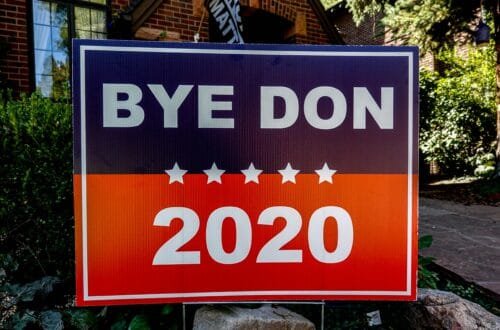Unfulfilled Promises: Trump’s Commitments to Americans

Tax Cuts: The Unmet Expectations
During his presidential campaigns, Donald Trump made bold promises regarding tax reductions that were aimed at providing financial relief for both individuals and businesses. His tax plan, famously encapsulated in the Tax Cuts and Jobs Act of 2017, was heralded as a significant overhaul of the U.S. tax system, suggesting substantial savings for middle-class families and significant benefits for companies. Trump asserted that these cuts would spur job growth, increase wages, and ultimately bolster the economy.
However, the reality of these tax cuts has been met with a mix of enthusiasm and disappointment. While the legislation did lower rates and increased the standard deduction, many average Americans did not experience the profound financial relief that was anticipated. According to the Tax Policy Center, in 2018, about 80% of taxpayers received a tax cut, with the average decrease around $2,000. Yet, as the years progressed, the majority of taxpayers saw minimal long-term benefits, leading to public skepticism.
Moreover, the benefits heavily skewed toward the wealthiest individuals and corporations. The corporate tax rate was significantly slashed from 35% to 21%, a change that critics argue primarily enriched shareholders rather than stimulating wage growth or job creation. By 2020, polls indicated that a considerable portion of the public believed that the tax cuts had failed to fulfill their promises. A survey by Gallup found that only 25% of Americans considered the tax cuts a benefit to the average citizen.
In the aftermath, the expected growth in investments and wage increases did not materialize as Trump had predicted. The dissatisfaction among many voters regarding the tax cuts echoes a profound sense of unfulfilled expectations, casting doubt on the effectiveness of the fiscal policies espoused during his presidency. As such, the echoes of Trump’s promises linger, leaving many Americans to reflect on what could have been.
Healthcare Coverage: A Broken Promise
During his tenure, former President Donald Trump consistently asserted that he would deliver better healthcare coverage for Americans, often emphasizing his intention to repeal and replace the Affordable Care Act (ACA). His administration proposed various reforms aimed at reducing healthcare costs, increasing competition, and enhancing access to services. However, the reality of healthcare access for the average American during his presidency proved to be more complicated than his assurances suggested.
One of Trump’s central promises was to lower prescription drug costs, a commitment that resonated with many citizens concerned about the burden of medical expenses. While he announced initiatives, including a plan to allow Medicare to negotiate drug prices, these measures largely faced significant hurdles in Congress. Consequently, the anticipated relief for American families often fell short, leaving many to grapple with the same, if not higher, prescription medication expenses during his administration.
Moreover, efforts to dismantle the ACA without a comprehensive replacement exacerbated fears regarding healthcare coverage for millions of individuals, especially those with pre-existing conditions. Attempts to cut funding for Medicaid expansion led to increased uncertainty around the stability of healthcare access for vulnerable populations who relied heavily on these programs. The recurrent threat of losing their healthcare options fueled political backlash and deepened the divide within the nation concerning health policy reform.
In reality, during Trump’s presidency, access to affordable healthcare remained a contentious issue. While certain facets of his administration’s healthcare agenda aimed at promoting competition and affordability, the outcomes were mixed. Many Americans found themselves in a precarious situation regarding coverage, as unfulfilled promises surrounding healthcare reforms only heightened existing anxieties about the future of their healthcare access.
Economic Revival: Manufacturing and the Coal Industry
The promise to revive the American manufacturing sector and the coal industry was a cornerstone of Donald Trump’s campaign. His administration adopted a series of economic policies aimed at stimulating growth and job creation in these industries, including imposing tariffs on imported goods, renegotiating trade agreements, and rolling back regulations. These strategies were intended to protect domestic jobs and reinvigorate sectors that had seen significant decline over preceding decades.
In the manufacturing sector, Trump’s emphasis on “America First” policies was designed to prioritize American workers and industries. By enacting tariffs, particularly on steel and aluminum imports, the administration hoped to create a level playing field for domestic manufacturers. While initially, there were signs of a manufacturing rebound—with some companies expanding and hiring—this growth proved uneven. The pandemic exacerbated existing vulnerabilities, and many manufacturers still rely heavily on global supply chains, making complete independence challenging. As manufacturers grappled with increased costs of raw materials due to tariffs, some were forced to reconsider their growth strategies.
The coal industry faced a different set of challenges. Trump positioned himself as a champion of coal jobs, claiming his administration would undo the regulatory constraints imposed by previous administrations. Despite this support, the reality was more complex. The transition to renewable energy sources stimulated by both market forces and regulatory trends continued to impact the coal sector. Industry testimonials highlight a struggle; many workers found themselves in an economic landscape that did not fully accommodate the promises of revival.
Across both sectors, the overarching reality remains that job creation has fluctuated. While some jobs were added, they were often at a slower pace than anticipated. Workers and industry analysts alike continue to reflect on the promises made versus the actual outcomes, raising questions about the sustainability of the economic policies implemented during Trump’s presidency.
Immigration and the Border Wall: Reality vs. Rhetoric
During his presidency, Donald Trump made significant promises regarding immigration, prominently vowing to build a border wall and ensure that Mexico would finance it. This commitment became a cornerstone of his campaign and administration, yet the execution of these promises revealed complexities that often contrasted sharply with the rhetoric. The issue of immigration in America is deeply intricate, influenced by economic factors, humanitarian concerns, and diverging public opinions.
Trump’s assertion that immigrants were taking away jobs from American citizens simplified a far more nuanced employment landscape. Studies have shown that while immigration can impact wage dynamics in certain sectors, it often fills labor shortages in others, providing essential contributions to industries essential for economic growth. The suggestion that simply building a wall would stabilize employment fundamentally mischaracterized the multifaceted nature of the labor market, where demand for labor in various sectors continues to be influenced by numerous factors beyond immigration status.
Regarding the border wall, funding and construction revealed further gaps between promise and reality. Despite the initial pledge that Mexico would pay for the wall, it was ultimately U.S. taxpayers who bore the financial burden. Reports and budgets indicate that expenditures for the wall grew substantially beyond initial estimates, raising questions about fiscal responsibility and the prioritization of resources. The actual construction faced numerous legal challenges and delays, highlighting the complexities involved in immigration policy enforcement and infrastructure developments.
The narratives surrounding immigrants during Trump’s administration often portrayed them negatively, which exacerbated societal divisions. Many immigrant communities experienced increased scrutiny and anxiety amid heightened enforcement measures. The contrast between the president’s rhetoric and the lived realities of these communities underlined the broader implications of immigration policy on American society.




